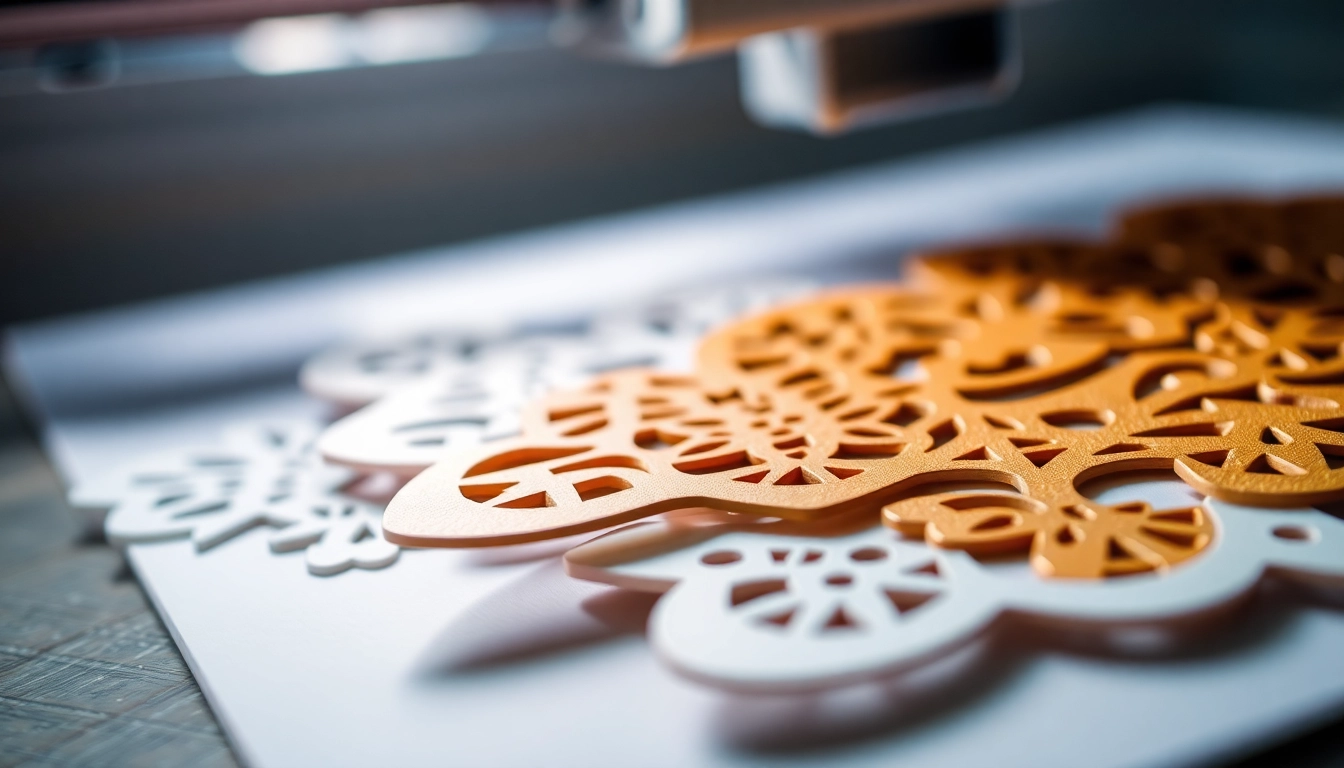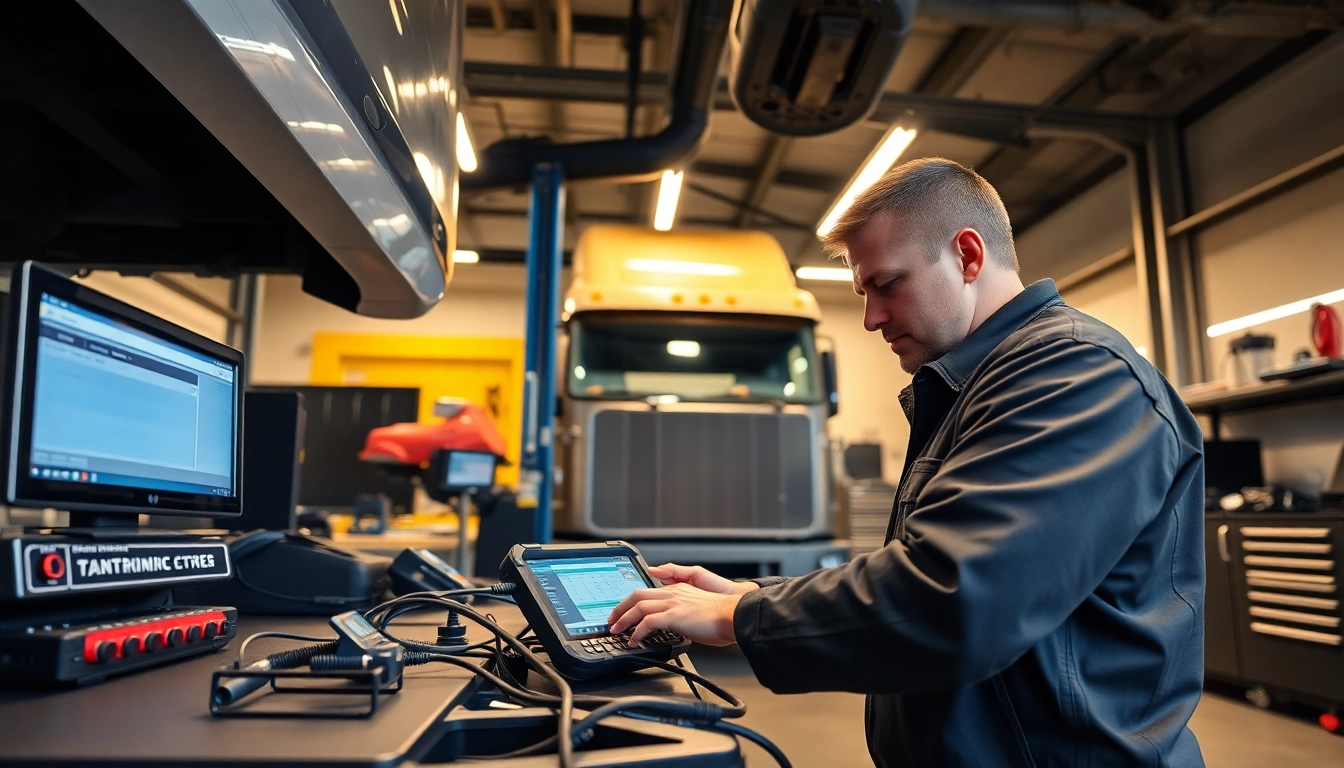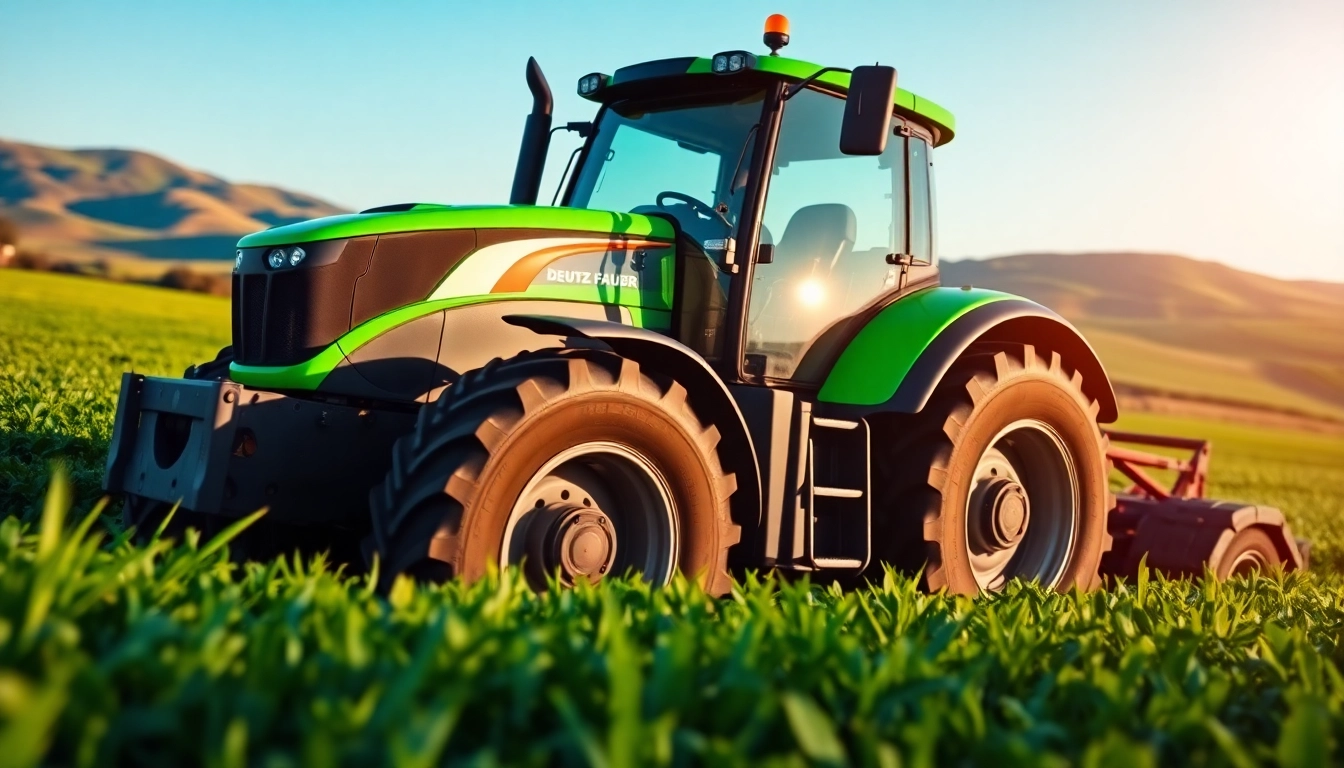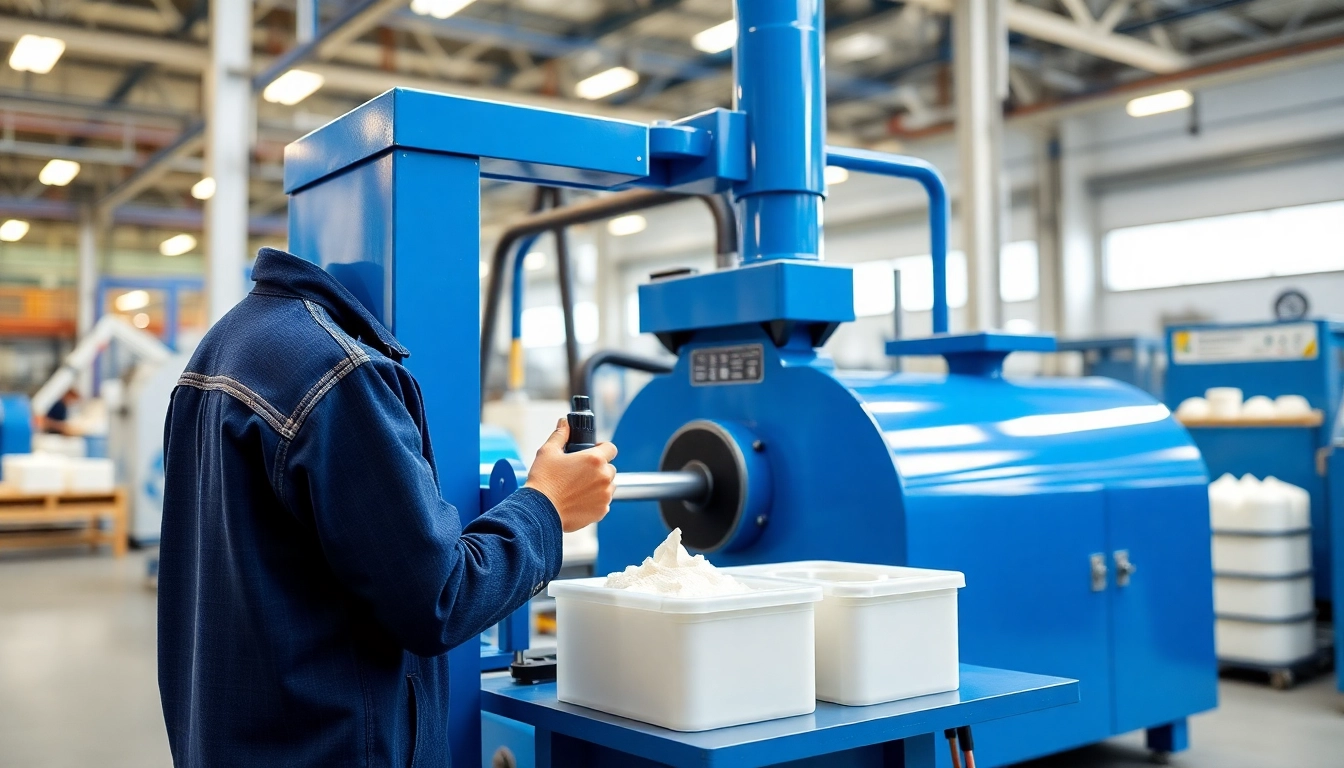Understanding Precision Die Cutting
What is Precision Die Cutting?
Precision die cutting is a manufacturing process that involves the use of a specialized tool known as a die to cut materials into specific shapes and sizes. The precision aspect of this technique is crucial, as it ensures that the final product meets exact specifications required for various applications. The die cutting process can handle a wide range of materials, including paper, cardstock, plastic, rubber, and metal, making it a versatile technique in the manufacturing sector.
Typically, precision die cutting is employed in industries that require high-quality, uniform products, such as automotive, medical, and consumer goods manufacturing. This method not only enhances production speed but also reduces waste and material costs, as it can efficiently produce large volumes of items without compromising on quality. For those looking to dive deeper into the nuances of precision die cutting, understanding its fundamental processes and applications is essential.
The Importance of Precision in Manufacturing
Precision in manufacturing is not just a matter of achieving the correct dimensions; it also plays a vital role in the assembly and functionality of products. In sectors such as aerospace and automotive, even minor deviations from specifications can lead to catastrophic failures. Therefore, precision die cutting holds a critical place in manufacturing as it ensures that components fit together seamlessly during the assembly process.
Moreover, with the increasing complexity of product designs and the drive for innovation, manufacturers face the challenge of utilizing various materials and processes simultaneously. Precision die cutting provides a reliable solution to produce intricate designs at scale, making it invaluable in modern manufacturing environments. The combination of speed and accuracy allows businesses to meet tight deadlines without compromising the end product’s quality.
Key Materials Used in Precision Die Cutting
Various materials can be effectively cut using precision die cutting methods. The choice of material often depends on the application’s requirements. Some common materials include:
- Cardboard and Paper: Used in packaging, printed materials, and promotional items.
- Plastic: Common in consumer products, including containers and components.
- Foam: Utilized for padding, insulation, and product cushioning.
- Rubber: Employed for gaskets, seals, and other applications requiring flexibility.
- Metals: Thin sheets of metals are used in automotive and machinery components.
Each material has its unique cutting requirements. For instance, while paper and cardboard can be cut using traditional steel rule dies, plastics and metals may require rotary or laser die cutting for greater precision and detail. Understanding the properties of each material is essential for manufacturers to select the appropriate cutting method and achieve optimal results.
Techniques and Processes in Precision Die Cutting
Flatbed vs. Rotary Die Cutting Techniques
Die cutting techniques can broadly be categorized into two main types: flatbed and rotary die cutting. Each method has its advantages and specific applications.
Flatbed Die Cutting: This method uses a flat surface to hold the material in place while a cutting die presses down to create the desired shape. This technique is particularly advantageous for larger cuts and thicker materials. It is commonly used in the production of packaging, where strength and durability are paramount.
Rotary Die Cutting: In contrast, rotary die cutting employs cylindrical dies that rotate to cut materials as they feed through the machine. This method is ideal for high-speed applications and can handle a wider range of materials, including flexible substrates. Because it produces less waste and operates more quickly, rotary die cutting is often the preferred choice for large-scale production runs.
Deciding between flatbed and rotary die cutting depends on the specific needs of the project, including material type, volume, and required precision. Each technique offers unique benefits that can optimize production processes.
Laser Cutting in Precision Applications
Laser cutting is an advanced technology that uses focused laser beams to cut materials with exceptional precision. This method has gained popularity in many industries due to its ability to produce intricate designs and patterns that traditional die cutting methods cannot achieve.
One of the primary advantages of laser cutting is its versatility; it can be used on various materials, including plastics, metals, wood, and even fabrics. Additionally, laser cutting eliminates the need for physical dies, reducing initial setup costs and allowing for rapid prototyping and design changes.
However, while laser cutting provides tremendous precision, it can also be slower than traditional die cutting methods for large production runs. Consequently, manufacturers often integrate laser cutting into their workflows alongside traditional die cutting methods to leverage the strengths of both approaches.
Combining Techniques for Optimal Results
In many modern manufacturing environments, combining various die cutting techniques is key to achieving optimal operational efficiency. By employing both flatbed and rotary die cutting alongside laser cutting, manufacturers can cater to the specific demands of different projects. This approach allows for:
- Higher flexibility: Manufacturers can adapt to a range of products with differing specifications and materials.
- Cost-effectiveness: Choosing the right technique for each task can lead to significant savings in material and labor costs.
- Enhanced quality: By utilizing the strengths of different methods, manufacturers can ensure that their final products meet the highest standards of precision and quality.
This strategy of integrating multiple techniques enables companies to streamline their production processes and respond adeptly to market demands while maintaining product quality and efficiency.
Applications of Precision Die Cutting Across Industries
Automotive Industry Use Cases
The automotive industry is one of the primary beneficiaries of precision die cutting technology. Components such as gaskets, seals, and insulation used within vehicles require high precision to ensure safety and efficiency. For example, the application of die-cut rubber gaskets creates tight seals to prevent fluid leaks, ensuring vehicle longevity and performance.
Additionally, the trend toward electric vehicles (EVs) has fostered even greater innovations in die cutting, as manufacturers seek lightweight materials and eco-friendly alternatives. As a result, precision die cutting continues to play a critical role in developing new automotive technologies that meet stringent regulations and consumer expectations.
Healthcare and Medical Applications
The healthcare sector relies heavily on precision die cutting for various applications, particularly in creating medical devices, components, and packaging. Materials like silicone, foam, and soft plastics are commonly cut using precision techniques to produce items such as:
- Biomedical devices: Custom parts that fit seamlessly into medical instruments and devices.
- Adhesive applications: Die-cut patches and dressings for wound care.
- Packaging solutions: Secure, sterile packaging for medical supplies and devices.
Given the stringent regulatory requirements within the healthcare industry, the accuracy and reliability offered by precision die cutting are indispensable. Manufacturers must ensure that their products comply with health and safety standards, underscoring the importance of precise manufacturing processes.
Consumer Goods Manufacturing Insights
The consumer goods sector has seen vast strides in the application of precision die cutting, particularly in packaging and product design. As brands seek to differentiate themselves in a crowded market, innovative packaging solutions have become pivotal. Precision die cutting enables the creation of distinctive shapes, windows, and features in packaging that enhance product visibility and appeal.
Moreover, with an increasing focus on sustainability, precision die cutting processes are often employed to reduce waste. By optimizing material usage and minimizing production scrap, companies can enhance their eco-friendly credentials while maintaining efficiency and quality in their manufacturing processes.
Quality Control in Precision Die Cutting
Standard Tolerances and Specifications
In precision die cutting, standard tolerances are critical to ensuring that the manufactured components meet specified requirements. Tolerances can vary depending on several factors, including material type, cutting method, and product purpose. For instance, the tolerance for common steel rule dies can be around ±0.005 inches, which is crucial for applications requiring high accuracy.
Manufacturers must implement stringent quality control processes to monitor these tolerances throughout production. This often includes utilizing precision measuring tools and techniques such as coordinate measuring machines (CMMs) to ensure product specifications are met consistently.
Testing and Assurance Practices
Quality assurance in precision die cutting involves several stages of testing to ensure that every product meets the required standards. The process typically includes:
- Material inspection: Evaluating raw materials before they enter the production line.
- In-process monitoring: Checking parts at various stages of production for compliance with specifications.
- Final inspection: Conducting thorough checks on finished products to guarantee quality before shipment.
Employing these testing and assurance practices not only helps in maintaining quality but also aids in identifying potential errors before they escalate into significant issues.
Improving Consistency in Production
Consistency in production can be enhanced through the implementation of standardized processes and regular maintenance of equipment. Using high-quality dies and adhering to best practices in setup and operation can reduce variability in the manufacturing process, leading to improved product quality and consistency.
Training staff on the latest die cutting techniques and technology is equally crucial. An informed workforce is better equipped to identify problems and make necessary adjustments to maintain production quality. Furthermore, employing automation in the die cutting process can also enhance consistency by minimizing human error and ensuring uniformity in production runs.
Future Trends in Precision Die Cutting Technologies
Advancements in Machinery and Techniques
The future of precision die cutting is poised for remarkable advancements, particularly in machinery and techniques. New technologies, such as software advancements in computer-aided design (CAD) and computer-aided manufacturing (CAM), allow for better modeling and simulation of die cutting processes. This not only enhances design flexibility but also shortens product development cycles.
Additionally, the introduction of more sophisticated sensor technologies will enable real-time monitoring of production conditions, allowing manufacturers to adjust processes dynamically to maintain quality and efficiency. Consequently, ongoing investment in advanced machinery and process improvements is expected to solidify precision die cutting’s position in various industries.
Eco-friendly Practices in Die Cutting
With a growing emphasis on sustainability, the precision die cutting industry is increasingly focusing on environmentally friendly practices. This includes the adoption of biodegradable materials and energy-efficient cutting processes to reduce the environmental impact of manufacturing.
Moreover, efforts are being made to minimize waste through optimized material usage and recycling of scrap materials. By embracing eco-friendly practices, manufacturers can meet consumer demands for sustainability while also adhering to regulatory requirements related to environmental impact.
The Role of Automation in Future Precision Cutting
Automation is set to revolutionize precision die cutting by improving efficiency, accuracy, and productivity. Smart factory concepts, driven by Internet of Things (IoT) technologies, will allow machinery to communicate and adjust processes autonomously, significantly enhancing operational workflow.
The role of automation also extends to workforce dynamics. As routine tasks become automated, skilled workers can focus on more complex tasks, such as design and problem-solving. This shift is likely to create a more informed and capable workforce, further driving improvements in quality and operational excellence.




